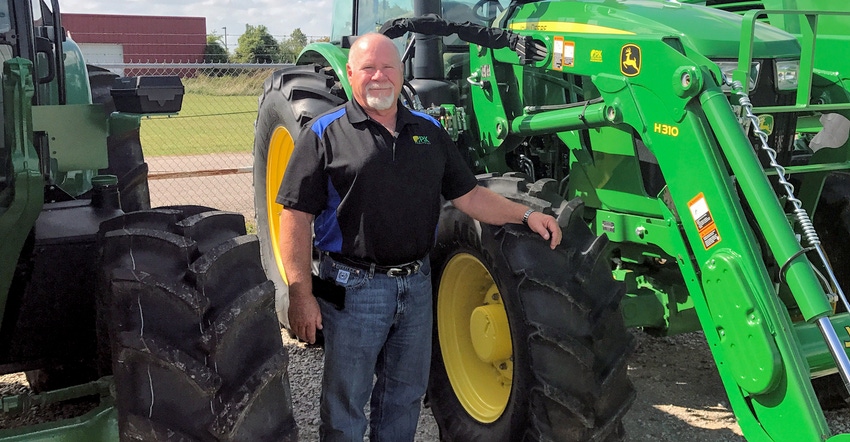October 11, 2017

With stagnant grain prices, cropland values steady or lower, and input costs still a pain to pay, production margins remain tight at best. Thankfully, there are potential cures that lead to better returns.
Recent Farm Futures survey responses revealed several real-life moves farmers are making right now that can improve the bottom line — for the 2018 season or beyond.
In part one we shared two ideas – refinancing and a fix for balance sheets. Here are two more that are worth a look. Watch for this series online for more.
Look for good deals on slightly used equipment
With prices for a new combine pushing $400,000 and big tractors in a similar ballpark, many growers are likely looking at the pre-owned market for equipment needs. But even used equipment prices may be tightening.
“From two years ago until earlier this year, late-model used equipment had been about 20% lower than new equipment,” says Ricky Dugan, general manager of P&K Equipment John Deere dealership in Norman, Okla. “They were going down at a rapid rate. But used markets have leveled off.
“The value is coming up for that good, clean-used machine. If it’s just an average machine, price ranges seen in the spring haven’t changed.”
P&K also has Midwest stores, including nine in Iowa. “Our operations in the Midwest are seeing what we’re seeing down here,” Dugan says. “If they’re clean and have been taken care of, their market has come back.”
Dugan believes the past 18 months have seen a correction in equipment prices. Many buyers did a one-year roll to new equipment. The one-year equipment was rolled to the second- and third-tier buyers. Dealers got tired of doing that.
Farmers looking for some guarantee in used equipment should consider a certified program, says Dan Valen, director of product marketing, New Holland North America. “For some people ‘new’ is always the way to go,” he says. “For others, buying a certified pre-owned piece of machinery may be the right solution.
“With [New Holland] certified pre-owned, you get something with lower hours that has been inspected and serviced by factory-certified technicians. There is also a limited warranty. You know you’re getting a late-model machine and usually at a good price. You have a lower yearly payment due to a lower upfront investment, and you will still get many good years out of it,” Valen says.
Buy next year’s propane now
Like prices for corn, soybeans, cattle or hogs, fuel prices can be highly volatile from one day to the next. Cost for propane to dry down this year’s corn crop will likely be 35% to 40% higher than in 2016. But there remain opportunities to lock in propane at a good price for 2018, says Bryce Knorr, Farm Futures senior grain market analyst.
Volatility was at high tide when Hurricane Harvey thrashed the Texas coast in late August. Gulf of Mexico oil rigs went virtually dormant until the tropical terror moved away. Some 20% of the nation’s refinery capacity was shut down. That put Midwestern farmer co-ops and fuel dealers on notice.
“Propane prices typically move higher in mid-October ahead of winter,” Knorr says. “But it typically sees a break into mid-November or Thanksgiving. That could be a buying opportunity for growers by forward-contracting propane for delivery next summer.”
While November 2017 propane futures were priced at about 75 cents per gallon in late August, contracts for next spring were in the 60-cent range. Those are similar to wholesale prices paid by dealers. Retail prices farmers pay, of course, will be higher; they average 45 to 60 cents more than the wholesale benchmark.
Prices can also vary with location. After checking several co-op websites across the grain belt, propane in West Texas was $1.80 to $1.90 per gallon for more than 150 gallons. In Arkansas, it was about $1.40. In Iowa and Indiana, it was $1.10 to $1.15.
Knorr says propane tends to follow crude higher and lower, adding that prices in propane hub Conway, Kan., were up 35% from summer lows even before Hurricane Harvey. “The potential for spikes due to hurricanes and other seasonal factors are why we recommended booking most fall diesel and all propane long before prices started to rise,” he says. “The good news for growers, especially for propane, is the potential for lower prices long term.”
Next: Focus on farm input deals, soil sampling to cut fertilizer costs
About the Author(s)
You May Also Like




